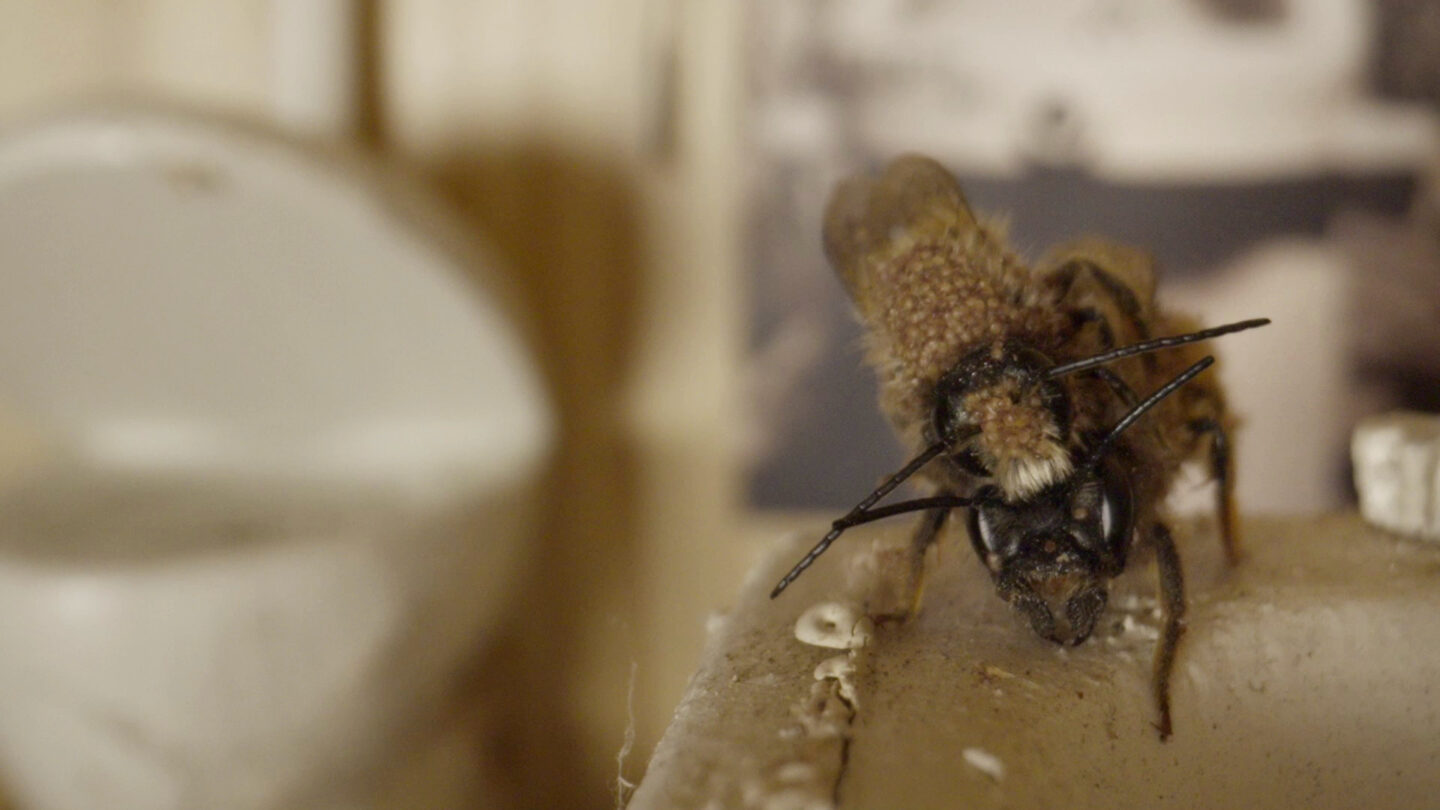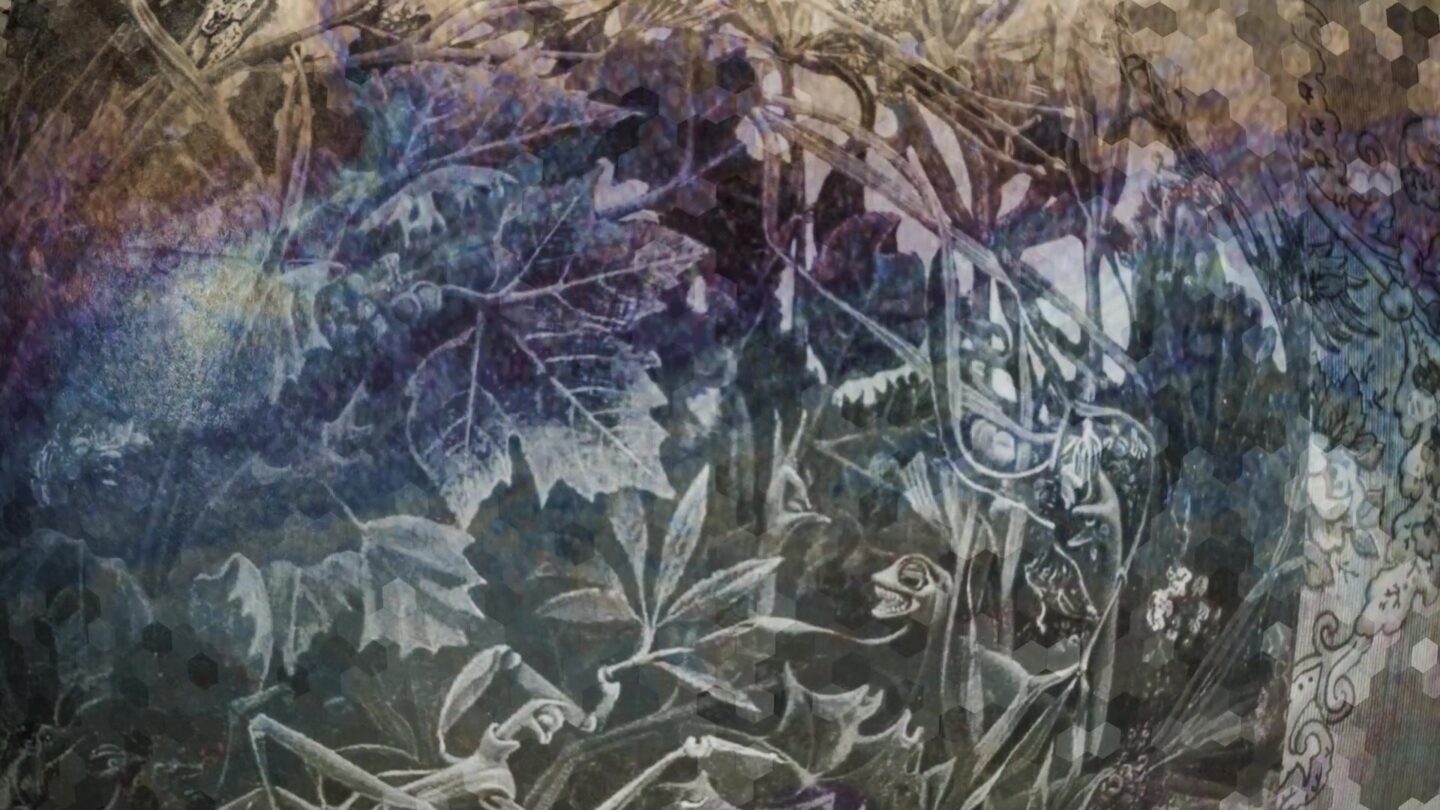Avant-garde for Insects
2016-2022,
Object, process, film 15'40''
Nowogród / 66p, Wrocław, Poland

“Avant-garde for Insects” by Joanna Rajkowska is a dystopian film in which the main protagonists are wild bees living in the artist’s garden. Their mating rituals were filmed in an old doll’s house, the walls of which are decorated with a canon of works of modern art. The action is set in a world where there are no more people and the traces of their presence reach other species like a mysterious letter in a bottle. The letter addressed to the bees was written during the coronavirus pandemic and carries the weight and wisdom of this experience. The film confronts the viewer with a fait accompli: “Perhaps you will survive the catastrophe we have prepared for ourselves – we will not.”
_______________________________________________
The film Avant-garde for Insects is the culmination of a project that has evolved over several years. In 2015, Joanna Rajkowska was approached for an installation for the final edition of Parkowanie Festival in Sopot. For this, she acquired an old doll’s house of German origin. The house came without furniture, but had curtains, fake flowers in the windows and lights that didn’t work.
She bought second hand furniture, also of German origin and dating from 1948. Further furniture was made and a kitchen and bathroom installed. Wherever practical, holes were drilled in the furniture for the insects, including in the backs of the kitchen cabinets, which inquisitive insects could access by crawling underneath the cupboards. Cut reeds were added in the basement and stuck to the ceilings of the rooms. Finally, scale copies of significant works of modern art were mounted onto thin plywood and attached to the walls. The work was installed in the park for a few days. Interest was shown by humans rather than insects. But insects take their time.
At the end of the exhibition, the project was transported to the artist’s garden in Nowogród, where it stood between some spruces, in a three-sided clear acrylic construction. Over time, the interior began to look somewhat derelict, rather like a house abandoned by its human occupants does.
After several years, on one sunny May morning while working on the puppets for Night Herons, the artist heard a persistent buzzing from outside her studio. She found that the doll’s house was swarming with mason bees. These usually solitary animals congregate over a few weeks to mate and lay their eggs in, for example, the open ends of cut reeds and other similarly sized holes. The frenzied bees staggered around the house, over the furniture, crawled across the masterpieces of modern art on the walls and on the floors where some works had fallen. Out came her rather old camera… although her footage was later to be rejected by the editor, Marca Górka, with:“You give me this shit?”
Since then, the bees have returned each summer for a few days to engage in reproduction and viewing art. And each year, they have been filmed. The year after filming Night Herons, Leszek Molski returned with the same camera that he had brought for use in that film. It was a cold spring and the bees were infested with mites. The following year, the pictures had been replaced due to the protective laminate producing a reflection during filming. The new images were simply paper glued to plywood. That first night, for the first time, snails came to view the artworks. And snails really devour art… literally. Particularly Max Ernst. The pictures were hurriedly removed and replaced with matt finish laminated copies. The snails retired. The bees returned and showed their approval in a more civilised manner.
There was a fresh edit each year to incorporate the new footage. As the film evolved, the accompanying letter was written by the artist while sitting in her studio next to the bees’ house. It was written during the second pandemic summer and is a reflection of the resignation with which she faces a seemingly rather certain future. Read so eloquently by Anda Rottenberg, it is as much a farewell from the human artists as an introduction to avant garde for insects.
















